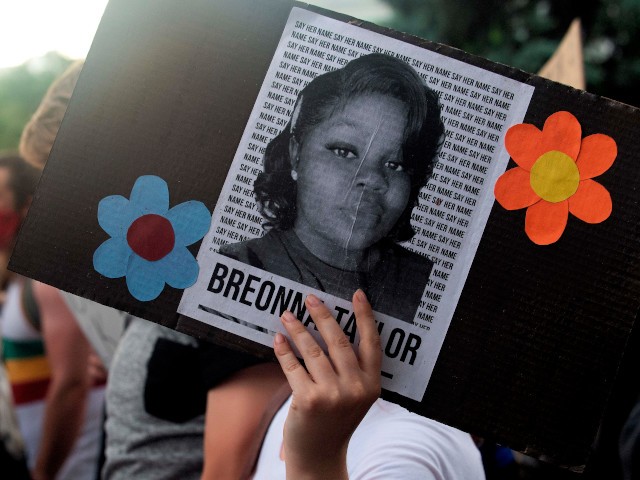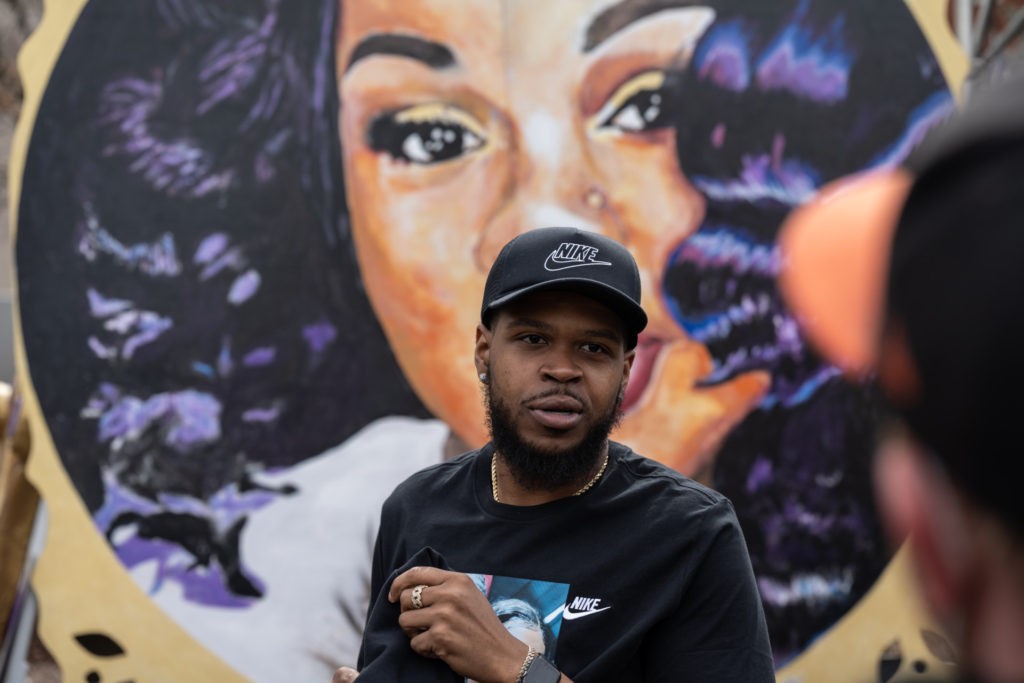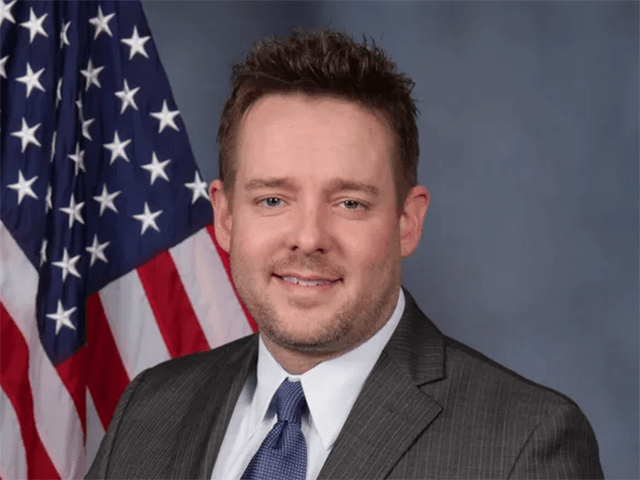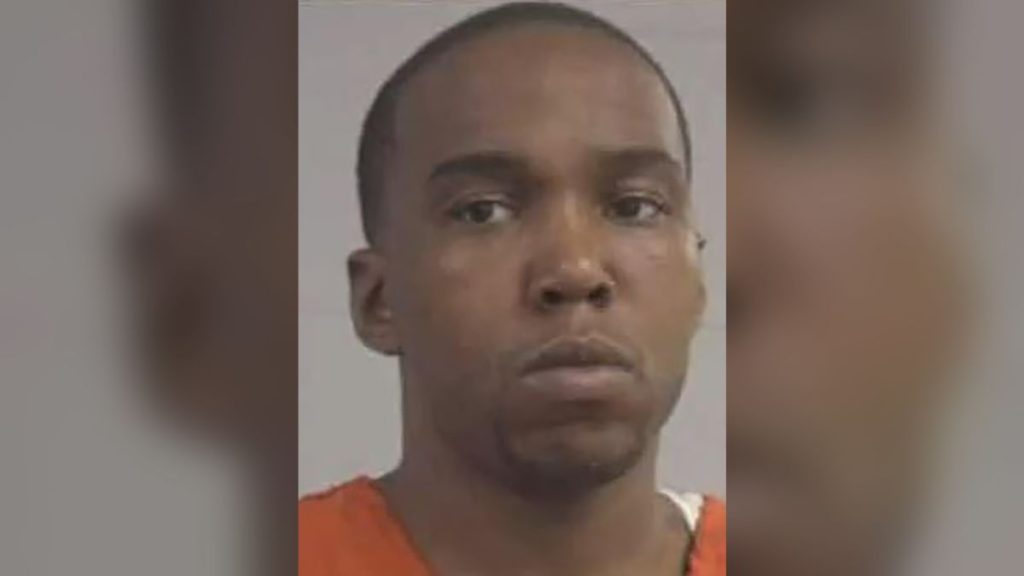During the execution of a search warrant on March 13, 2020, 26-year-old emergency room technician Breonna Taylor was fatally shot and Louisville police Sgt. Jonathan Mattingly was shot and nearly killed.
The incident sparked an establishment media feeding frenzy marked by a combination of facts and hysteria, resulting in a public outcry marked by violence in the streets and a war on cops.
One of the claims perpetrated by the establishment media was that officers entered Taylor’s apartment without knocking or announcing themselves. Such claims were so powerful that as recently as March 11, 2022, nearly two years after Taylor’s death, TIME was still reporting, “Taylor’s death was the result of a no-knock warrant served at her apartment on March 13, 2020, as part of a narcotics investigation.”
But Mattingly uses his book, 12 Seconds in the Dark: A Police Officer’s Firsthand Account of the Breonna Taylor Raid, to explain the warrant was a “knock and announce” warrant, and marked as such during the official briefing that occurred just hours before he and other officers approached the apartment seeking entry.
He pointed out the search warrant for Breonna Taylor’s apartment was one of a number of warrants being executed simultaneously in the city in attempts to locate and apprehend 30-year-old Jamarcus Glover. He noted the warrant for Taylor’s apartment was initially signed as a “no knock” but since police had “trackers and phone pings on the main targets, the no-knock would not be utilized at [Taylor’s] location.”

A demonstrator holds a sign with the image of Breonna Taylor during a protest against the death of George Floyd in Minneapolis, in Denver, Colorado on June 3, 2020. (JASON CONNOLLY/AFP via Getty Images)
On August 30, 2020, the New York Times reported Glover had previously been Taylor’s “on-again-off-again boyfriend.” The paper also observed that while Taylor had no criminal record, “Glover’s frequent run-ins with the police entangled her. She had been interviewed in a murder inquiry, and paid or arranged bail for him and his associates.”
The Times’ reporting also noted that although “the department had gotten court approval for a ‘no-knock’ entry to search for evidence of drugs or cash from drug trafficking, the orders were changed before the raid to ‘knock and announce.'” The “knock and announce” designation meant “that the police had to identify themselves,” the Times observed.
“Originally the warrant was signed as a no-knock warrant, but they knew exactly where Jamarcus Glover was, who was the main target,” Mattingly told Breitbart News Sunday on March 20. “Breonna was one of the targets, but she was not the main target, she was not the main mover of these narcotics, she just played a peripheral role in this case. So once they realized, based on the tracker on his vehicle and the ping on his phone, that he wasn’t going to go to Breonna’s apartment … we changed the dynamics of this warrant to a knock and announce because it no longer fit the profile of what you tell a judge [for a] no knock warrant.”
According to Mattingly, he and his team wore tactical vests with the word “POLICE” emblazoned on the back. Moreover, after knocking hard twice, he says he began verbally announcing that officers were at the door. “After using an open hand to bang on the door for two separate cadences with no response, I began to accompany each knock with a loud verbal announcement that we were the police and had a search warrant,” he explained.
Mattingly wrote:
I banged on the door for the third time and yelled, “Police! Search warrant!” a couple of times. I waited a few seconds and banged again and repeated myself. After the fifth time banging and third time yelling to the resident inside the house that we were the police, Det. Nobles stopped me. He said he thought he heard someone come up to the door. I then yelled, “Police! We have a search warrant! Open the door!” With no response, I banged one last time and announced our presence.
By this time, we had been knocking and announcing for forty-five seconds to a minute. This seems like an eternity when you are on the other side of an unknown threat. Imagine yourself at a red light at 3 a.m. with no cars in sight. The minute you spend sitting there waiting on the light to turn green feels like forever. Now take that feeling and amplify it by 100 when standing on the other side of a closed door you are preparing to go through. It was at this time I looked over my right shoulder to my lieutenant. He gave me the nod and said, “Let’s hit it.” I looked at [Det. Mike Nobles] and said, “Go ahead,” not having any idea what we’d encounter on the other side of that door.
He noted that he and his team announced, “Police, Search Warrant,” as the attempt to breach the door began.
Mattingly noted that police slammed the ram against the door three times to get the door open, after which he remained in position “on the left side of the door frame,” scanning the room visually from the outside to verify the apartment’s general layout and to ascertain threats.
He wrote:
I “sliced the pie” of the room. This is a technique that is used to clear as much of the room as you can from your current position of concealment or cover before over-committing to the unknown. In this case I was able to stay behind the door frame and clear the room from right to left before stepping in the threshold. I could identify there were no threats in the living room, but my visual real estate ran out once the doorframe and hallway wall came together in my view.
Mattingly then committed to entering, knowing the detective “behind [him] in the stack would follow [him] and cover the long hallway.” As he began to enter his eyes were able to make out two figures entering the hallway from the bedroom of the apartment. His focus intensified and he described the realization that he was looking down the barrel of a gun:
The two figures were standing side by side at the end of the hallway, so close to each other that they could have been one, but I could see that one of the individuals was considerably taller than the other. That was the only defining difference in that millisecond. I couldn’t tell if they were black or white, male or female. The taller figure, on the right, was stretched out in an “Isosceles Stance”—feet shoulder-width apart and both arms extended. My eyes fixated on the barrel of the 9mm semi-auto handgun that the man I now know was Kenneth Walker had outstretched. By the time my mind registered it was a gun, I saw the flash, heard the bang, and felt the smash to my thigh simultaneously. The bullet had ripped through the wallet in my front pocket and penetrated my thigh. It was like a piercing hot rod going through my leg.
Mattingly described feeling excruciating pain but remembered to return fire, noting, “The only option for de-escalation is returning fire to keep the suspect from continuing to shoot at you.”
After quickly firing four shots toward the threat he knelt down behind the door frame. From there he “placed two shots into the door jamb behind which [Kenneth Walker] had hidden.”
The bullet had damaged Mattingly’s femoral artery and flung him into a life or death scenario. He the remembered hearing more gunfire as he struggled to find cover and an ambulance, followed by “a second volley of gunfire,” then silence.
Mattingly underwent a five hour, life saving surgery. Afterward, as he lay in a hospital bed, he learned that “a young, black female had been standing next to [Kenneth Walker]…and had been fatally shot.” Piecing it together mentally, he realized the deceased individual was “the shorter figure [he’d] seen in the hallway” when his eyes first made out the outlines of two individuals entering the hallway from a bedroom hours ago.
That “shorter figure” was Breonna Taylor.
As his wife stood at his hospital bedside, Mattingly told her, “I would ask [Kenneth Walker] why Breonna was standing right there next to him. Why so close? Why put her in harm’s way if you truly thought we were intruders? Why leave her in the hallway while you jumped to safety after you fired the shot that hit me?”

Kenneth Walker, boyfriend of Breonna Taylor, stands in front of a portrait of Taylor during a protest memorial for her in Jefferson Square Park on March 13, 2021 in Louisville, Kentucky. (Jon Cherry/Getty Images)
While talking to Breitbart News Sunday, Mattingly stressed again that Breonna was standing in the hallway with Walker and that Walker fired at police then dove into the bedroom, leaving Breonna in the hallway alone. Mattingly said Breonna was shot as police returned fire into the hallway. He noted the claims that she was shot while lying in her bed are simply inaccurate.
AWR Hawkins is an award-winning Second Amendment columnist for Breitbart News and the writer/curator of Down Range with AWR Hawkins, a weekly newsletter focused on all things Second Amendment, also for Breitbart News. He is the political analyst for Armed American Radio and a Turning Point USA Ambassador. Follow him on Instagram: @awr_hawkins. Reach him at awrhawkins@breitbart.com. You can sign up to get Down Range at breitbart.com/downrange.


COMMENTS
Please let us know if you're having issues with commenting.